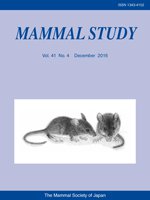The aim of this study was to examine relationships between sustainable energy intake (SusEI) and resting metabolic rate (RMR) in Eothenomys miletus and to understand the factors limiting maximum SusEI/RMR during lactation. Body mass, food intake, RMR, milk energy output (MEO), litter size, litter mass, and thermal conductance were measured. Body mass decreased during lactation, but food intake increased. RMR was positively related to the weight of the mammary glands and MEO. We conclude that SusEI is limited at the level of 3.59 × RMR in first-lactating E. miletus. There were no significant effects of litter size on maternal body mass, food intake, thermal conductance, RMR, or litter mass. There were significant effects of fur-shaving on food intake, RMR, and thermal conductance. Fur-shaving increased thermogenic capacity but had no significant effect on reproductive output. These observations provide support for the peripheral limitation hypothesis and argue against the heat dissipation limitation hypothesis.
How to translate text using browser tools
1 December 2016
Limits to Sustainable Energy Intake during Lactation in Eothenomys miletus: Effects of Fur-Shaving and Litter Size
Wan-Long Zhu,
Hao Zhang,
Jin-Long Cheng,
Jin-Hong Cai,
Li-Hua Meng
ACCESS THE FULL ARTICLE

Mammal Study
Vol. 41 • No. 4
December 2016
Vol. 41 • No. 4
December 2016
dorsal fur removal
peripheral limitation hypothesis
thermogenic capacity




